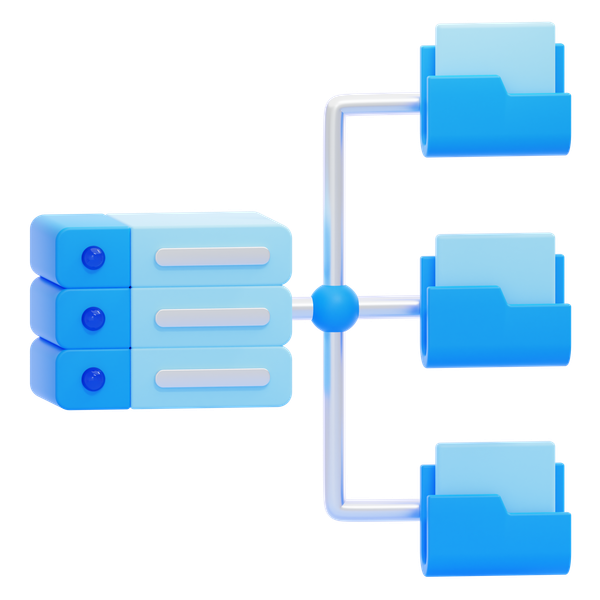Their Role in Software Development and Enterprise Applications
What is a Database?
A database is an organized collection of data stored and accessed electronically, enabling efficient storage, retrieval, and information management. Unlike plain files, databases are structured to ensure data can be accessed quickly and effectively, which is crucial for applications ranging from simple websites to complex enterprise systems.
Databases come in various types, such as relational databases, NoSQL databases, and in-memory databases. Among these, relational databases are the most widely used due to their structured format and robust management capabilities.
The Relational Model
The relational database model organizes data into tables consisting of rows and columns. Each table represents a different entity (e.g., users, products, or orders), and relationships between tables can be established using foreign keys. This model provides several key advantages:
- Data Integrity: Constraints maintain the accuracy and consistency of data.
- SQL (Structured Query Language): A powerful standard language for querying and managing data efficiently.
Relational Databases
- Structured Data Model: Organizes data into well-defined tables with relationships.
- Data Integrity: Supports constraints like primary keys and foreign keys to enforce accurate data relationships.
- Ease of Querying: Enables developers to retrieve and manipulate data with SQL.
Relational Database Management Systems (RDBMS)
A Relational Database Management System (RDBMS) is software designed to help IT teams create, manage, and interact with relational databases. RDBMS has become the backbone of modern data management systems.
Key Components of RDBMS:
- Structured Data Model: Organizes data into tables with predefined connections.
- Concurrent Data Access: Manages simultaneous user interactions efficiently.
- Fault Tolerance: Ensures data reliability during system failures.
- Distributed Data Storage: Supports scalable data management across servers.
- Data Integrity: Enforces rules and constraints to maintain data accuracy.
- Client Flexibility: Integrates with various applications and tools seamlessly.
Importance of Databases in Software Development
- Structured Data Management : Applications handling large volumes of data benefit from structured storage, ensuring efficient categorization and retrieval.
- Scalability and Performance : Relational databases are designed to scale with growing data requirements without compromising performance.
- Collaborative Development : Clearly defined data structures enable multiple developers to work simultaneously on different aspects of a project without conflicts.
- Data Analysis and Reporting : SQL capabilities allow developers to generate reports and conduct analyses, driving better decision-making.
Databases in Enterprise Applications
Enterprise applications often involve complex systems that demand robust and reliable data management. Databases plays an imperative role in these types of applications.They are :
- Centralized Data Management : Databases serve as a centralized repository, ensuring consistent and accessible data across departments.
- Support for Business Processes : They handle complex operations such as e-commerce transactions, inventory management, and real-time analytics.
- Security and Access Control : Advanced security features protect sensitive data and allow controlled access based on user roles.
- Data Backup and Recovery : Built-in mechanisms ensure data safety in case of system failures or disasters.
- Integration and Interoperability :Databases integrate seamlessly with other systems, enabling smooth data flow across organizational applications.
An Example of a database schema for a simple Job Search application
Database Schema
- Users Table
- Companies Table
- Jobs Table
- Applications Table
- Skills Table
Users Table : Stores information about the job seekers.
| Column Name | Data Type | Constraints |
|---|---|---|
user_id | INT | PRIMARY KEY, AUTO_INCREMENT |
first_name | VARCHAR(50) | NOT NULL |
last_name | VARCHAR(50) | NOT NULL |
email | VARCHAR(255) | UNIQUE, NOT NULL |
phone | VARCHAR(15) | UNIQUE, NOT NULLABLE |
password_hash | VARCHAR(255) | NOT NULL |
resume | VARCHAR(255) | NULLABLE(file path) |
created_at | TIMESTAMP | DEFAULT CURRENT_TIMESTAMP |
Companies Table : Stores information about companies posting jobs.
| Column Name | Data Type | Constraints |
|---|---|---|
company_id | INT | PRIMARY KEY, AUTO_INCREMENT |
name | VARCHAR(255) | UNIQUE, NOT NULL |
website | VARCHAR(255) | NULLABLE |
email | VARCHAR(255) | UNIQUE, NOT NULL |
phone | VARCHAR(15) | UNIQUE, NOT NULLABLE |
address | VARCHAR(255) | NULLABLE |
created_at | TIMESTAMP | DEFAULT CURRENT_TIMESTAMP |
Jobs Table : Stores details about job postings.
| Column Name | Data Type | Constraints |
|---|---|---|
user_id | INT | PRIMARY KEY, AUTO_INCREMENT |
company_id | INT | FOREIGN KEY REFERENCES Companies(company_id) |
title | VARCHAR(255) | NOT NULL |
description | TEXT | NOT NULL |
location | VARCHAR(255) | NOT NULL |
employment_type | ENUM(‘Full-time’, ‘Part-time’, ‘Contract’, ‘Internship’, ‘Remote’) | NOT NULL |
salary_range | VARCHAR(50) | NULLABLE |
posted_at | TIMESTAMP | DEFAULT CURRENT_TIMESTAMP |
application_deadline | DATE | NULLABLE |
Applications Table : Stores information about job applications submitted by users.
| Column Name | Data Type | Constraints |
|---|---|---|
application_id | INT | PRIMARY KEY, AUTO_INCREMENT |
job_id | INT | FOREIGN KEY REFERENCES Jobs(job_id) |
user_id | INT | FOREIGN KEY REFERENCES Users(user_id) |
status | ENUM(‘Pending’, ‘Reviewed’, ‘Shortlisted’, ‘Rejected’, ‘Hired’) | DEFAULT ‘Pending’ |
applied_at | TIMESTAMP | DEFAULT CURRENT_TIMESTAMP |
Skills Table : Stores skills associated with users or required for jobs.
| Column Name | Data Type | Constraints |
|---|---|---|
skill_id | INT | PRIMARY KEY, AUTO_INCREMENT |
name | VARCHAR(255) | UNIQUE, NOT NULL |
UsersSkills Table : Stores the many-to-many relationship between users and skills.
| Column Name | Data Type | Constraints |
|---|---|---|
user_id | INT | FOREIGN KEY REFERENCES Users(user_id) |
skill_id | INT | FOREIGN KEY REFERENCES Skills(skill_id) |
| PRIMARY KEY | (user_id, skill_id) |
JobSkills Table : Stores the many-to-many relationship between jobs and skills.
| Column Name | Data Type | Constraints |
|---|---|---|
job_id | INT | FOREIGN KEY REFERENCES Jobs(job_id) |
skill_id | INT | FOREIGN KEY REFERENCES Skills(skill_id) |
| PRIMARY KEY | (job_id, skill_id) |
Table Relationships
- A
Usercan apply for multipleJobs. - A
Jobcan receive applications from multipleUsers. - A
Jobcan have multiple requiredSkills. - A
Usercan have multipleSkills.
Conclusion
Databases are indispensable in software development and enterprise applications, offering structured, scalable, and reliable data management solutions. By understanding relational models and leveraging tools like RDBMS, businesses unlock the full potential of their data.



